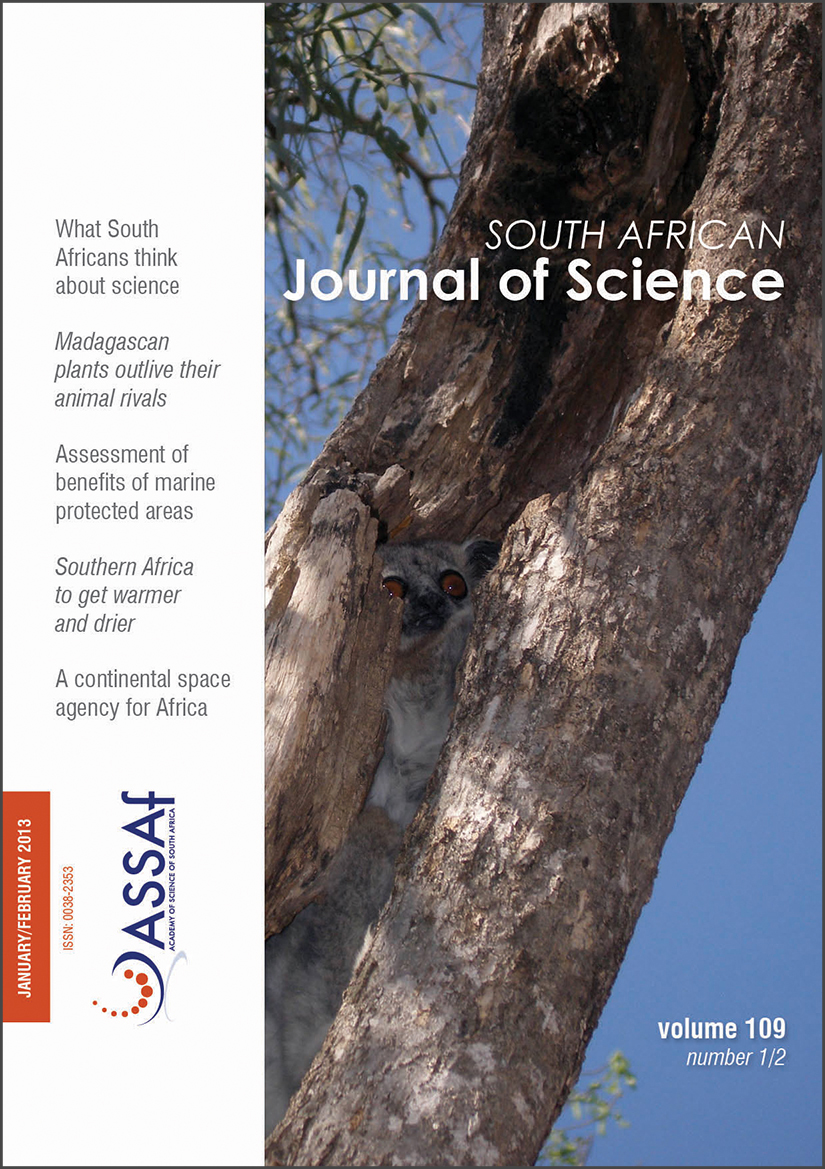Occurrence of CCA-treated timber in caterers’ fuelwood stocks in the Cape Town region
DOI:
https://doi.org/10.1590/sajs.2013/1015Keywords:
CCA, microwave digestion, wood fuel, informal economy, cateringAbstract
Wood used as fuel under conditions of urban poverty is a source of air pollution. Fuelwood is harvested from peri-urban green areas or sourced as waste from industry or commerce, and used in the informal economy, both by households and by productive activities such as roadside catering. End-of-life timber may have previously been treated for protection, sometimes by impregnation with chromated copper arsenate (CCA). Combustion of CCA-treated timber could magnify the health and environmental risks associated with air pollution, as a result of the release of arsenic and chromium in toxic and carcinogenic forms. Fuelwood supplies of roadside caterers in the urban settlements of Nyanga and Khayelitsha were randomly sampled and 86 collected specimens were prepared for analysis. A further 12 samples were taken, based on their appearance, from households and caterers in settlements near Stellenbosch, Worcester and Paarl. Shavings from the timber specimens were microwave digested using nitric acid and analysed using inductively coupled plasma analysis. All samples collected in the first round showed low concentrations of Cr, Cu and As, believed to be representative of natural backgrounds. Of the 12 peri-urban samples collected in the second round, 8 showed higher levels, typical of treatment to H2–H5 standards. Once it was clear that appearance was a fair indicator of treatment, a further set of 18 suspect pieces from caterers’ supplies in Langa, Nyanga, Khayelitsha and Kayamandi were tested, of which at least 1 sample from each area was found to be treated. CCA-treated timber was found infrequently in fuel supplies of urban caterers, and more frequently in peri-urban areas. Further research and interventions to limit health and environmental risks are recommended.
Published
Issue
Section
License

All articles are published under a Creative Commons Attribution 4.0 International Licence
Copyright is retained by the authors. Readers are welcome to reproduce, share and adapt the content without permission provided the source is attributed.
Disclaimer: The publisher and editors accept no responsibility for statements made by the authors
How to Cite
- Abstract 429
- PDF 369
- XML 192
- EPUB 166












.png)